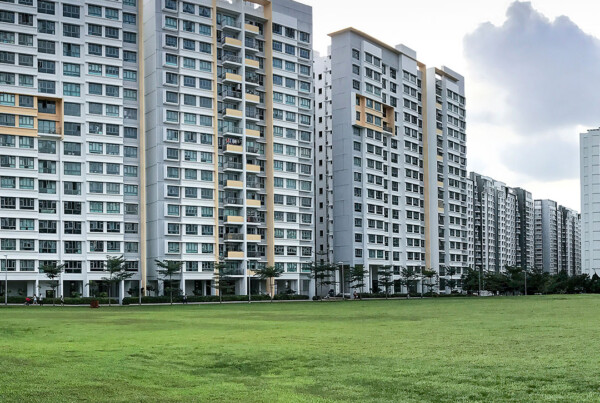
Cable Next-Gen, March 2019, the prefatory thoughts of two industry veterans.
In March, cable and video executives will gather to explore the future of the cable industry. The event is powered by LightReading and takes place in Denver. I saw an opportunity to sneak a peek at what will be on the agenda by interviewing two cable industry executives behind Teleste Intercept, as they both will participate in interesting panel discussions.
Mr. Hanno Narjus, CEO of Teleste Intercept and SVP of Teleste, on which panel you will participate?
Hanno: Our panel is called “Cable’s last mile: getting down with DAA”
Mr. Neil Tang, President of Antronix Inc, what is the name of your panel?
Neil: “Welcome to 10G: why DOCSIS may never die”
Thanks Neil, so why will DOCSIS never die?
Neil: DOCSIS has proven to be rapidly evolving technology that has always delivered broadband speeds that subscribers need. As is currently being discussed, an extended spectrum and full duplex DOCSIS can again extend the lifespan of DOCSIS in addition to DAA.
Yes, but will it die; won’t PON replace DOCSIS sooner or later?
Neil: Televisions as they were in the 60’s have died, but televisions have not died, they are just constantly evolving. Are televisions now computers with a display or televisions that contain computers? It is just matter of definition. When fiber is in every household, will it be called PON or DOCSIS, or will these technologies somehow merge? I think it would be more interesting to discuss when coaxial cables will die; my answer would be that it will take a long time.
 Hanno, Neil mentioned DAA, but so far bigger DAA network roll-outs have kept us waiting. Why?
Hanno, Neil mentioned DAA, but so far bigger DAA network roll-outs have kept us waiting. Why?
Hanno: Your statement is partly true, although some DAA networks have already been built in Europe. To some extent because many European FTTH roll-outs urge Cable MSOs to take the next step now. As most European networks are by now capable of 204MHz/1.2 GHz, reaping the benefits of DAA is somehow easier than it will be when you cannot use the full spectrum. Anyhow, DAA is now advancing fast in North America.
Neil, is 204MHz/1.2 GHz a natural step in North America, too? Shouldn’t we leap directly to full duplex DOCSIS or to the extended spectrum, in practice up to 1.8 GHz?
Neil: A good question, although to me a move to 1.8 GHz does not exclude FDX. In both cases it would make sense to look at high performing passives. Also, N+0 can support 1.8 GHz.
So, are you saying that the move to 1.8 GHz and ultra-high split networks is easy?
Neil: No, neither is moving to N+0; however, according to our test results, both options are realistic, and the last mile passives must have excellent performance anyway.
But 1.8 GHz requires amplifier upgrades?
Neil: Only in places where N+0 architecture is not realistic.
Sorry to be stubborn, but do you now assume that FDX cannot happen if the architecture is not N+0.
Neil: Not really, also 1.8 GHz FDX amplifiers are possible, but I would like to discuss that topic later on in Denver, it again leads to many interesting questions.
Appreciated. Hanno, a lot of hertz on the table. Is that the only thing that matters?
Hanno: No, deploying DAA requires DOCSIS migration readiness, video migration readiness, network management system readiness and interoperability readiness. The shift to distributed access won’t be easy, and diversity among the specialists who must participate in the shift is beyond what the cable industry is used to. Getting down with DAA, especially getting down to business sooner rather than later, requires management of many aspects. As European roll-outs have revealed, the devil is in the details.
Could you give some practical examples?
Hanno: Well, huge power consumption of Remote PHY devices, how many skilled installers are needed unless field devices become more intelligent, what advanced modulation methods require in terms of network performance, will RF overlay stay due to legacy set top boxes, is there one system that can be used to manage the whole network and what interoperability readiness really means. I could continue but I guess my list was already too long.
Do you think that the Generic Access Platform (GAP) program simplifies some of these challenges?
Hanno: Not really, actually the opposite. However, I’m not saying that the proposed GAP is necessarily a futile initiative. We have experienced one such initiative in practice when German operators standardized a platform called BK. The BK exercise had its pros and cons.
Could you elaborate a little bit more; what were those pros and cons?
Hanno: Yes, definitely, but I would like to discuss them soon in Denver.
I see, thanks a lot to both of you.
Let’s continue discussions at the event!
Stop by our demo table!
Teleste Intercept
offers a wide range of intelligent optical nodes and amplifiers, and software for Intelligent Network management. We also have long-term experience in network architectures and their design, planning, installation and maintenance.
If you wish to discuss more about our solutions and their benefits, please contact sales@telesteintercept.com
About the author
Steve Condra, Director, Engineering and Product Management of Teleste Intercept
Steve Condra has more than 30 years of experience in the Telecommunication industry. He spent 16 years with AT&T, Bell Labs, and Lucent Technologies primarily in outside plant design, manufacture, and installation. In addition, he spent 18 years in the Cable TV industry with Scientific Atlanta, Cisco, and Teleste primarily in HFC infrastructure including R&D and Product Management. Steve earned a Bachelor’s and Master’s degree in Mechanical Engineering from the University of Missouri.





